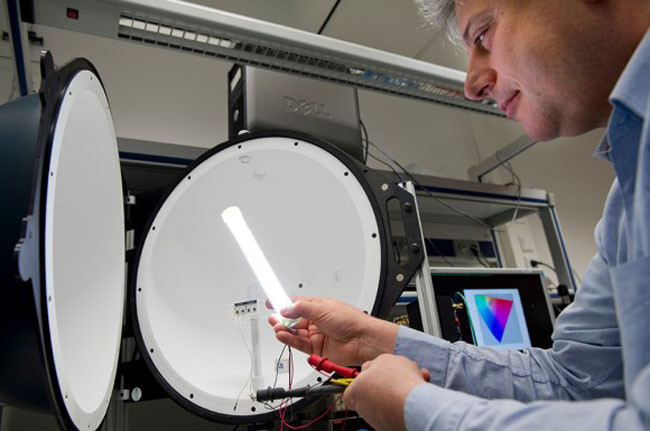Philips, the lighting company behind the Luxeon series of LEDs that are used by a number of aquarium fixture makers, recently announced that they have a prototype LED lamp that is hitting an efficiency of 200lm/W. The 1500lm, 3000-4500K, 7.5W lamp, called TLED, shows us a promising glimpse of what the future will hold for LED lighting.
200lm/W is a major milestone. Cree recently announced the MK-R white LED with a reported 200lm/W efficiency, but at less than practical drive currents and temperatures. Once a product like that is actually placed into the wild, that efficiency number drops like a rock. For Philips to actually hit these kinds of numbers in a real world demonstration is impressive to say the least.
The initial target for this product offering is to replace fluorescent lighting like you would see in office buildings and retail stores. Current high efficiency fluorescent lighting is hitting about 80-100lm/W today, with most LED replacement tubes only reaching 60-80lm/W. Philips would certainly be putting the lighting industry on it’s ear once these hit the market place some time in 2015.

So how are they doing this? After a little digging, they are taking a rather novel approach, at least in regards to general lighting. Normally, white LED light sources like an LED based fluorescent lamp replacement would use your typical white LEDs (blue chip with a phosphor coating). This time around, they are using an RGB arrangement, but with a twist. From what it sounds like, the blue LED will be your typical 450-460nm variety, with the red LED being closer to 660nm rather than 630nm for enhanced R9 color rendering performance. Where is gets interesting is with the green LED.
Rather than go with a direct color LED, meaning that the chip material is tweaked to emit light in the green range (515-550nm), they decided to go with a phosphor converted blue LED. Why would they do this? Well, current generation direct color green LEDs have an efficiency of about 100lm/W, give or take. A phosphor converted green LED has the ability to hit somewhere in the order of 380lm/W, which is most likely where the massive gains in overall efficiency for the lamp are made.
It’s yet to be seen if an RGB LED setup, regardless of how the red, green, and blue components are made, will actually provide accurate color rendering across the board. Philips has had a long and storied history with LED lighting, so we are sure they have thought this one through. What will be interesting is if this approach will end up being used in an aquarium application, even if it has been tweaked slightly to meet the needs of our cnidarian friends. Adopting this technique could yield some seriously efficient fixtures.




